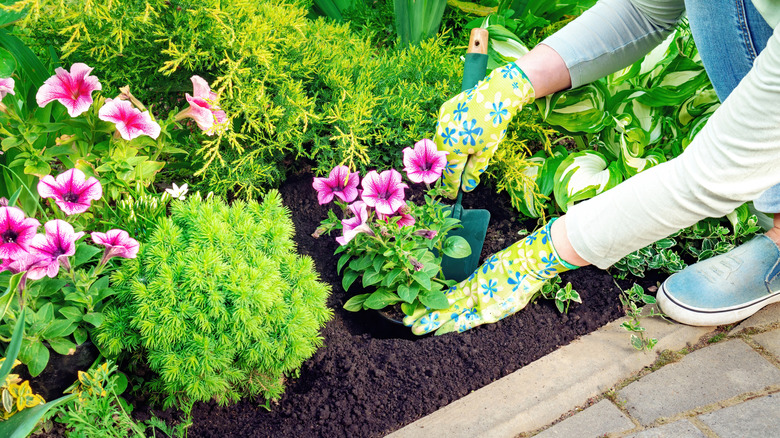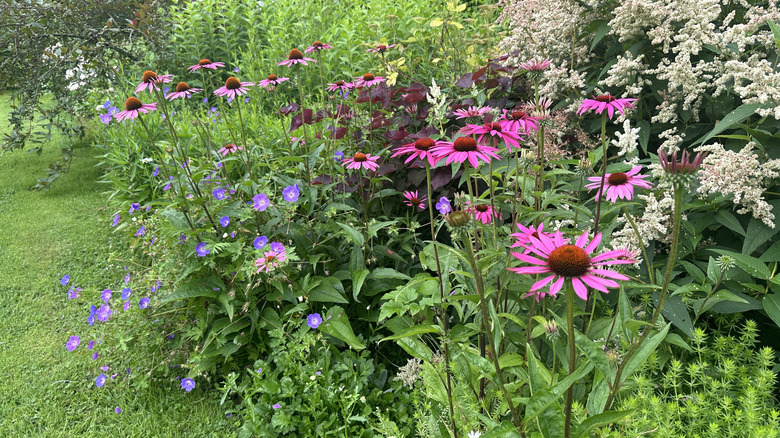The Flower Bed Trend That We Hope We Stop Seeing In 2026
With fall in full force, you might be thinking about which plants you should prune in your garden or ways to prepare your planters for fall aesthetics. But have you thought ahead to next year yet? The cooler months are a great time to strategize for the following spring and summer, when most flowering plants bloom. On that note, there is one gardening trend that we hope won't make it through the winter: planting ornamental flowers for aesthetics without considering their environmental impact. "The trend of planting for sheer aesthetics is fading," said Mary Phillips, head of the National Wildlife Federation's Garden for Wildlife program (via Homes & Gardens), "We're moving away from the era of planting high-maintenance ornamental plants that offer no benefit to wildlife, simply because they look pretty." Instead, experts like Phillips predict a shift toward landscaping with flowers that do a "job," like providing key nutrients for pollinating birds and insects or habitats for wildlife.
Intentionally choosing to fill your flower beds with native or wildlife-friendly plants may seem like a small thing. In reality, it's extremely important for the health of your local ecosystem. With 150 million acres of American habitat that have been sacrificed to urban sprawl over the past century, there are countless examples of native flora being edged out by showy, non-native ornamental plants that can even become aggressive growers or invasive species. But it doesn't have to be this way. You can have a beautiful garden and reap environmental benefits too. Keep reading to learn more about some native, eye-catching, and colorful flowers you can grow to attract pollinators, support wildlife, and promote biodiversity in your area.
Ornamentals are out, wildlife-friendly flowers are in
While it may no longer be a top priority, you don't have to forgo aesthetics completely to select flowers that support your local ecosystem. Native plants can be found in a wide range of heights, colors, textures, and blooming times. Many are even better at filling your garden with year-round interest than flimsy, high-maintenance ornamentals.
Start by researching perennial flowers that are native to the U.S. and known to appeal to birds, butterflies, bees, or other pollinating insects. Some popular picks include purple coneflowers, a lavender flower that's a magnet for butterflies and hummingbirds; black-eyed Susans, a mainstay with golden late-summer blooms that produce seeds birds love to munch on; and sun-loving asters, which boast cheery, daisy-like flowers that bees adore. Purple coneflowers and black-eyed Susans are hardy in USDA zones 3 through 9, while asters grow best as perennials up to zone 8.
To further support the environment, you might also consider planting a flower that can improve your garden soil quality, such as partridge peas. Hardy in zones 3 through 9, these native perennials feature pretty yellow flowers and root nodules with nitrogen-fixing bacteria that supports the health of other plants and microbes in their vicinity. Partridge pea seed pods provide food for birds, too. Growing habitat-essential flowers like milkweed (Asclepias syriaca), which is the preferred host plant for monarch caterpillars, is another route you can go. These durable flowers are also suitable for zones 3 through 9. Make sure you choose a native variety of milkweed, though — not tropical milkweed (Asclepias currasavica), a non-native subspecies that can actually cause harm to monarch butterflies.

